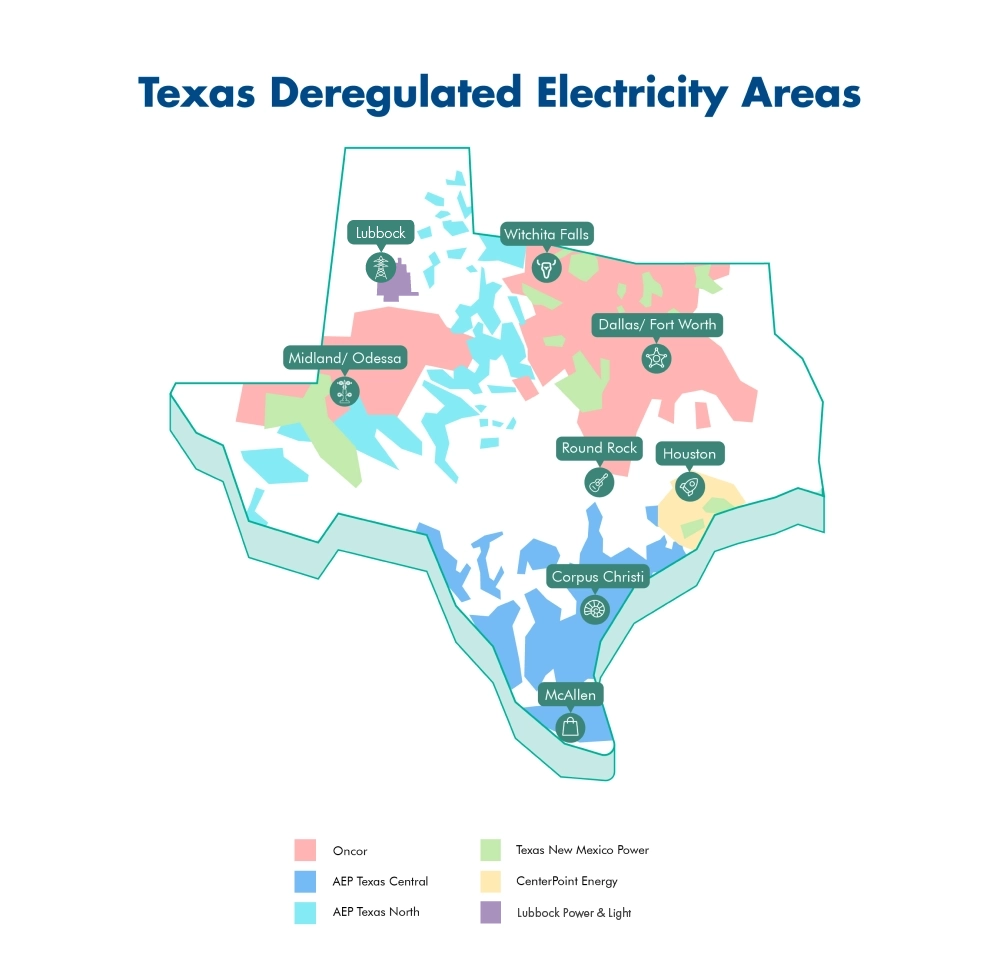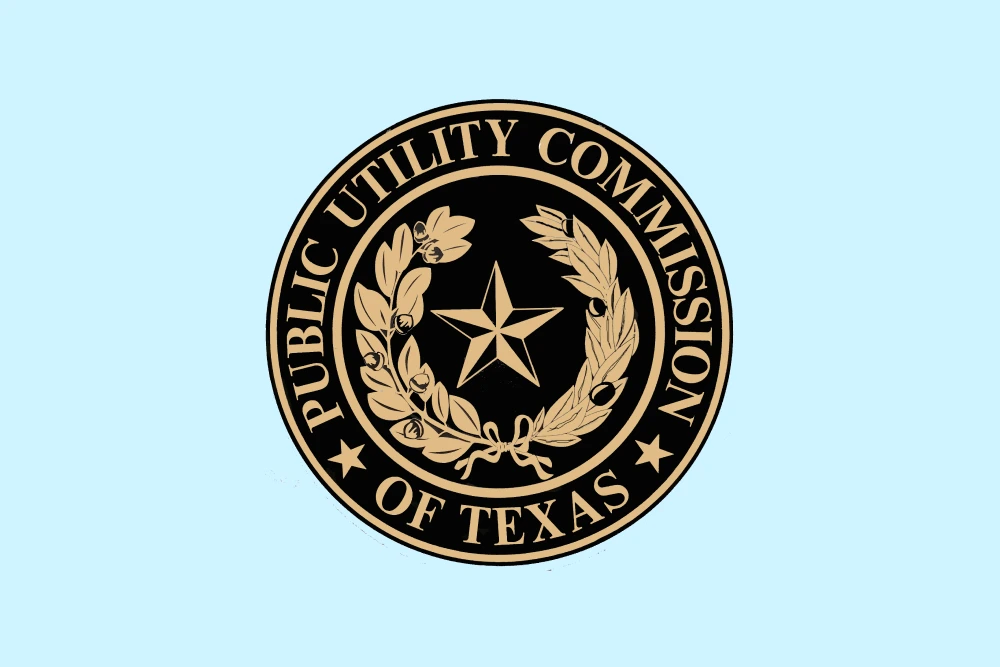Has the Texas Grid Been Winterized?
3 minute readIn February 2021, Winter Storm Uri brought record-breaking cold temperatures to Texas for nearly a week. This storm exposed a
Home > Learning Center > The Deregulated Texas Energy Market > When Is Electricity Cheapest in Texas?
The best time of year to shop for electricity in Texas
6 minute read • Last update November 2025

What are the best months to shop for energy plans in Texas?
Texas residential electricity rates are generally lowest in the spring and fall months.
That means you can secure a lower price between late February and early May, and mid-September to early December.
During these months, demand for power is lower, and that translates to lower prices for Texas electricity shoppers.
Electricity prices are lower in the spring and fall due to a combination of market factors, including:
If electricity providers are buying energy for 12 months, why don’t the rates average out? That would certainly make market rates more stable throughout the year. Unfortunately, it’s not so simple. This is where wholesale market volatility comes into play.
Prices in peak seasons are incredibly volatile because the grid is more at risk of extreme weather events, such as heatwaves or winter freezes. When it comes to signing up for a new plan, the further in time you are from these risky months, the cheaper the rates. This is because it’s easier for electricity providers like BKV Energy to prepare for their customers’ electricity consumption during those extreme weather events.
To simplify this further, purchasing wholesale electricity on behalf of customers when the weather is temperature is more efficient, more cost-effective, and less risky. This leads to lower prices for customers.
To put it simply, energy prices decrease when demand decreases, and energy prices increase when demand increases. Texans use less electricity during the spring and fall because the weather outside is milder.
Homeowners and renters rely less on air conditioning to stay cool in the spring and fall, so demand on the grid decreases. As a result, prices decrease.
During the summer, we crank up the AC and demand increases. This increased demand leads to higher prices across the Texas energy marketplace.
Supply and demand curves related to weather typically have the highest impact on the marketplace.
Where you live within the state of Texas impacts your electricity price. Texas is divided into six utility regions: Oncor, CenterPoint, AEP North, AEP Central, Texas-New Mexico Power, and Lubbock Power & Light.

Each of these utility companies charge different rates (TDU Charges or TDU Pass Through Charges) based on their costs to manage the transmission and distribution infrastructure (such as the maintenance of power lines). Each of these utility companies adds a per kWh charge and a flat monthly charge to your bill that impact your overall average price per kWh. With the except of Lubbock Power & Light, they only charge per kW,h and there is no monthly flat fee.
Texas utility companies adjust their fees at least twice per year, on March 1 and September 1. Changes to rates must be approved by the Public Utility Commission of Texas. They can change rates at other points throughout the year, but only with the approval of the PUCT.
Check out the recent history of TDU charges in Texas.
As the Texas power grid’s fuel mix continues to evolve, so does its impact on wholesale electricity prices. As more solar and wind farms go live, these changes become even more prominent.
Wind and solar produce electricity relatively cheaply, but they are not always available. The sun isn’t always shining, and the wind isn’t always blowing. When solar and wind go down, the grid must rely more on fossil fuel plants to meet demand. In the summer, when demand is especially high, this causes wholesale prices to skyrocket.
These high wholesale prices during the summer translate to high prices for Texans. Just another reason to sign up for a new power plan in the spring and fall!
For natural gas power plants, especially, the cost to generate electricity can vary widely depending on the weather. When temperatures rise over the summer, natural gas power plants operate at a lower efficiency, which means the cost to produce power increases. This increase in operation costs leads to higher wholesale prices, which means higher prices for consumers.

We already spoke about how utility charges vary by where you live, but we also need to address why utility costs increase or decrease.
Let’s take CenterPoint, for example. When Houston gets slammed by a hurricane and severe damage is inflicted upon the infrastructure that delivers power to homes and businesses, it is very expensive to repair that damage.
If Houston finds itself in the path of several dangerous storms in a row, CenterPoint may increase utility pass-through charges to help pay for the work needed to mend the grid.
There are two major organizations that have an impact on electricity prices in Texas: ERCOT and the PUCT. These groups (and others) impact retail electricity prices in several ways.

ERCOT and the PUCT are most likely to step in and influence the market during summer and winter because these are the times of year when the majority of grid-sensitive issues occur. In the summer, hot weather can lead to supply and demand issues. In the winter, freezes can shut down the grid entirely. Remember the winter storm of 2021?
In these extreme situations, state regulators jump into the ring, and their actions can increase (and in some cases decrease) the cost of power for consumers.
The best time to switch plans in Texas is generally towards the end of your current contract.
The PUCT requires electricity providers to allow customers to switch plans or providers in the last 14 days of their current contract without incurring an early termination fee.
If you decide to stick with your current provider, you can typically switch plans in the last 30 days of your current contract without incurring that early termination fee.
But what do you do if your contract ends in the summer or winter? How can you secure those affordable spring and fall prices?
If your electricity plan renewal schedule lands you smack dab in the middle of the summer or winter, you may be wondering how you can secure a lower rate in the spring or fall. Luckily, you have a few options.
Shift your renewal schedule by enrolling in a plan that ends in the spring or fall. From then on, only enroll in plans with 12, 24 or 36-month terms.
If you don’t mind paying the early cancellation fee, you can switch whenever you want. The money saved by securing spring or fall rates will eventually eclipse what you spent to switch plans early.
If you don’t want to pay an early termination fee, some providers occasionally offer a deal where they will cover your early termination fee when you choose one of their plans.
At BKV Energy, our #1 goal is to help Texans save on energy. That’s why we created the Bluebonnet plan. With no base charges, no usage fees, and a simple fixed rate, you can easily save just by switching. Enter your zip code below to explore rates in your area.
Graham Lumley, Digital Marketing Manager at BKV Energy, leads digital and traditional marketing strategies, focusing on educating Texans about the state's deregulated energy market. With over 8 years of marketing experience, he creates content to help consumers understand and save on their energy bills, bringing a fresh and dynamic approach to the industry.

In February 2021, Winter Storm Uri brought record-breaking cold temperatures to Texas for nearly a week. This storm exposed a

Switch holds are restrictions placed on electric meters that prevent customers from switching electricity providers. These statuses are meant to
Get $50 off your electric bill!
Use code BKVEJOINUS50
Enter your zip code to shop BKV Energy's affordable, fixed-rate Texas electricity plans. Use the promo code for $50 off your electric bill.